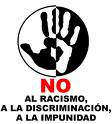
President Obama announced on Tuesday that he will nominate the federal appeals judge Sonia Sotomayor for the Supreme Court, choosing a daughter of Puerto Rican parents raised in Bronx public housing projects to become the nation’s first Hispanic justice.
Judge Sotomayor, who stood next to the president during the announcement, was described by Mr. Obama as “an inspiring woman who I am confident will make a great justice.”
The president said he had made his decision after “deep reflection and careful deliberation,” and he made it clear that the judge’s inspiring personal story was crucial in his decision. Mr. Obama praised his choice as someone possessing “a rigorous intellect, a mastery of the law.”
But those essential qualities are not enough, the president said. Quoting Justice Oliver Wendell Holmes, Mr. Obama said, “The life of the law has not been logic, it has been experience.” It is vitally important that a justice know “how the world works, and how ordinary people live,” the president said.
The judge described her selection as “the most humbling honor of my life.”
“I stand on the shoulders of countless people,” she said. But towering above all, she said, is her mother, Celina, who raised her alone after her father died. “I am all I am because of her,” Judge Sotomayor said, “and I am only half the woman she is.”
Judge Sotomayor is Mr. Obama’s first selection to the Supreme Court, and her nomination could trigger a struggle with Senate Republicans who have indicated they may oppose the nomination. But Democrats are within reach of the 60 votes necessary to choke off a filibuster, and Republicans concede that they have little hope of blocking confirmation barring unforeseen revelations.
Judge Sotomayor, 54, who has served for more than a decade on the Court of Appeals for the Second Circuit, based in New York City, would become the nation’s 111th justice, replacing David H. Souter, who is retiring after 19 years on the bench. Although Justice Souter was appointed by the first President George Bush, he became a mainstay of the liberal faction on the court, and so his replacement by Judge Sotomayor likely would not shift the overall balance of power.
But her appointment would add a second woman to the nine-member court and give Hispanics their first seat. Her life story, mirroring in some ways Mr. Obama’s own, would add a different complexion to the panel, fulfilling the president’s stated desire to add diversity of background to the nation’s highest tribunal.
Judge Sotomayor’s father died when she was 9 years old, and her mother worked six-day weeks to earn enough money to send her and a brother to Catholic school. She got into Princeton University, where she once said she felt like “a visitor landing in an alien country,” but graduated summa cum laude.
Although she grew up in modest circumstances, the judge said, “I consider my life to be immeasurably rich.”
After Yale Law School, where she was editor of the Yale Law Journal, she worked for Robert M. Morgenthau in the district attorney’s office in New York and later was in private practice. The first President Bush nominated her in 1991 to the federal district court on the recommendation of Senator Daniel Patrick Moynihan, Democrat of New York, and she was confirmed a year later. President Bill Clinton decided to elevate her to the appeals court in 1997, and she was confirmed a year later.
Judge Sotomayor has said her ethnicity and gender are important factors in serving on the bench, a point that could generate debate. “I would hope that a wise Latina woman with the richness of her experiences would more often than not reach a better conclusion than a white male who hasn’t lived that life,” she said in a 2002 lecture.
She also once said at a conference that a “court of appeals is where policy is made,” a statement that has drawn criticism from conservatives who saw it as a sign of judicial activism. Judge Sotomayor seemed to understand at the time that she was making a controversial statement, adding that, “I know this is on tape, and I should never say that, because we don’t make law.”
Conservatives quickly pointed to such statements after word of her selection on Tuesday.
“Judge Sotomayor is a liberal activist of the first order who thinks her own personal political agenda is more important than the law as written,” said Wendy E. Long, counsel to the Judicial Confirmation Network, an activist group. “She thinks that judges should dictate policy, and that one’s sex, race and ethnicity ought to affect the decisions one renders from the bench.”
White House officials concluded that such statements, while perhaps providing fodder for opponents, would not be problematic enough to hinder her confirmation. Some officials have said in recent days that they relish the prospect of Republicans standing up against a Hispanic woman with her life story, because it would only damage the G.O.P. with a key voting bloc.
The president sought to defuse some of those charges in advance, declaring his confidence that she has “a recognition of the limits of the judicial role.”
Indeed, in nominating the first Hispanic justice, Mr. Obama may appeal to a large and growing constituency whose party loyalty is still very much in play. Hispanic groups have expressed excitement about the idea of one of their own serving on the high court. (Some scholars argue whether Benjamin Cardozo was really the first Hispanic justice, but with his Portuguese-Jewish background, he never identified himself as a Hispanic.)
On the appeals court, Judge Sotomayor has not been involved in many hotly disputed decisions, but one that she participated in is before the Supreme Court right now. As part of a panel, she voted to uphold New Haven’s decision to throw out a set of fire department promotion tests because no minority candidates made the top of the list. White firefighters who scored high but were denied promotion are appealing that ruling.
As a district judge, she briefly earned fame in 1995 by ending a Major League Baseball strike, ruling in favor of players and against the owners, who she said were trying to subvert the labor system.
At the White House announcement, the East Room filled with members of the legal community and several Hispanic leaders, who received calls and e-mails on Tuesday morning to attend the ceremony and applauded enthusiastically when Mr. Obama entered the room with the nominee. To keep the decision secret, outside groups were not notified until about two hours before the event began.
The president conducted a face-to-face interview of Judge Sotomayor on Thursday at the White House, officials said. She was the second finalist to be interviewed, following Judge Diane P. Wood of Chicago.
Mr. Obama called her at 9 p.m. on Monday, officials said, to inform her that she was his choice. She traveled to Washington late Monday evening.
The president reached his decision over the long Memorial Day weekend, aides said, but it was not disclosed until Tuesday morning when he informed his advisers of his choice less than three hours before the announcement was scheduled to take place.
Mr. Obama telephoned Judge Sotomayor at 9 p.m. on Monday, officials said, advising her that she was his choice to fill the Supreme Court vacancy. Later Monday night, Mr. Obama called the three other finalists — Judge Diane P. Wood of Chicago, Homeland Security Secretary Janet Napolitano and Solicitor General Elena Kagan — to inform them that he had selected Judge Sotomayor.
Fuente:The The New York Times
ByPETER BAKER and JEFF ZELENY



















No hay comentarios:
Publicar un comentario